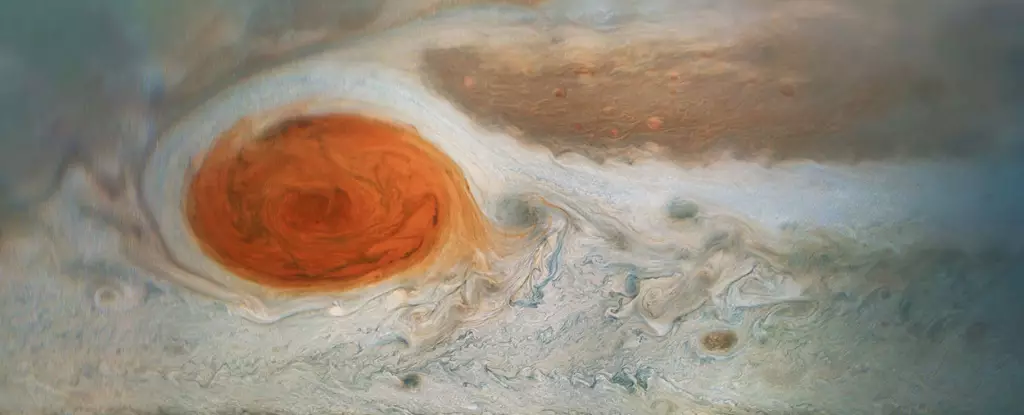Jupiter’s Great Red Spot (GRS) has captured the fascination of astronomers for centuries. This massive anti-cyclonic storm has been observed since the 1600s, making it one of the Solar System’s defining features. However, questions about its date of formation and longevity remain unresolved. Have we truly been witnessing the same phenomenon all these years, or are there hidden mysteries waiting to be uncovered?
The history of the GRS dates back to at least the 1800s, with some speculating that it may have been observed even earlier. Early accounts of the storm vary, with conflicting reports on its formation and movement. One of the earliest documented observations was in 1632 by a German Abbott who used a telescope to gaze upon Jupiter. Subsequent sightings by other astronomers further added to the enigma surrounding the GRS. However, the spot seemed to vanish for 118 years until astronomer S. Schwabe reported a structure resembling the GRS in the same location. This raises questions about the continuity of the phenomenon and its relation to the earlier storm.
Recent research published in Geophysical Research Letters sheds new light on the origins of the Great Red Spot. The study combines historical observations with computer simulations to provide a comprehensive understanding of this enigmatic storm. Lead author Agustín Sánchez-Lavega, a Professor of Physics at the University of the Basque Country, delves into the mysteries surrounding the GRS. The researchers conclude that the current GRS is unlikely to be the same as the Permanent Spot observed by G. D. Cassini, hinting at a complex evolution over time.
While historical records offer valuable insights, modern technology has revolutionized our understanding of the GRS. Space telescopes and spacecraft, such as NASA’s Voyager 1, Galileo, and Juno, have provided detailed images and data on the storm. Juno, in particular, has captured high-resolution images of Jupiter and the GRS, offering unprecedented views of the giant planet. By measuring the depth and structure of the GRS, Juno has uncovered new details that were previously unknown.
Supercomputer simulations have played a crucial role in deciphering the formation of the Great Red Spot. By examining different forces that could have generated the storm, researchers have narrowed down the possible mechanisms. From the eruption of gigantic superstorms to the merging of smaller vortices, various theories have been proposed. However, simulations of the South Tropical Disturbance (STrD) have provided the most accurate explanation for the GRS’s formation. The STrD model captures the complex winds in the region, creating an anti-cyclonic storm similar to the GRS.
The Great Red Spot remains a captivating mystery that continues to intrigue scientists and astronomers alike. While the storm’s exact origins may elude us, ongoing research and technological advancements offer new insights into this iconic feature of Jupiter. By unraveling the enigma of the Great Red Spot, we may unlock the secrets of our solar system’s past and gain a deeper understanding of the forces at play in our celestial neighborhood.


Leave a Reply